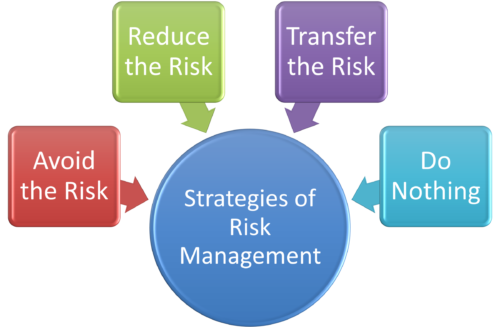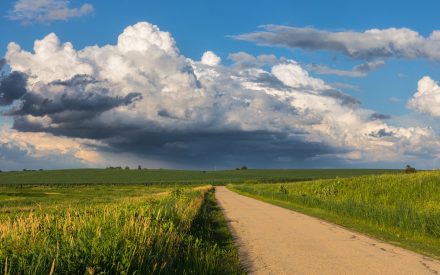For farmers, knowing their attitudes about risk and the levels of risk that they are willing to tolerate will assist them in setting risk management goals and strategies to manage risks.
Strategies to manage risk
There are four strategies that can be pursued by farmers to help them manage farm business risks.

- Avoid the Risk
Avoiding risk means to completely avoid potential events. Typically, this means that a farmer may choose to not undertake an activity, thus providing a zero percent probability that the event will occur. For example, if a farmer does not have enough labor to pick strawberries, they may decide not to grow strawberries. - Reduce the Risk
Reducing the risk requires a farmer to take action to reduce the probability that the event will occur or reduce the impact if the event does occur. For example, a farmer may provide worker safety training to their employees to reduce the risk of injury. - Transfer the Risk
Transferring the risk requires a farmer to transfer the cost of an undesirable outcome to someone else, such as an insurance company. For example, the insurance company will pay an indemnity when an event occurs. - Do Nothing
Doing nothing means that a farmer accepts the risk as-is, they might let it happen, and then be ready to bear the consequences. The farmer is assuming the chance of the negative outcome from an event and should budget accordingly to deal with situations. For example, a new employee quitting may have little impact on their farm business.
Action plan to manage risk
Once a farmer understands risk and the strategies to manage risk, they can establish an action plan to manage risk.
Step 1: Be aware. Identify the risks you face.
Step 2: Evaluate. Determine the likelihood that the risk will occur and how bad the hurt will be if it does occur.
Step 3: Choose a strategy. Decide on how you will address the risk, and reduce, transfer, avoid, or do nothing
Step 4: Implement the chosen strategy. Put your chosen risk management strategy into action.
Step 5: Control. Monitor to ensure things are working the way they should, and you had planned.
Gather team members
An important point to remember is that there is a team of people ready to help in all these steps of risk management. A farmer is the CEO of this team, but they are not alone. There are other team members out there ready to help you evaluate risks, develop courses of action, and implement decisions. A farmer’s next step is to learn more about risk management and reach out to these professionals for assistance.

References:
- Crane, L., Gantz,G., Isaacs, S., Jose, D. , & Sharp. R. (2013). Introduction to Risk Management. Understanding Agriculture Risk: Production, Marketing, Financial, Legal, Human Resources (2nd ed.). United States Department of Agriculture (USDA), Extension Risk Management Education and Risk Management Agency.
- Harwood, J., Heifner,R., Coble, K., Perry, J., & Somwaru, A. (1999). Managing Risk in Farming: Concepts, Research, and Analysis, Agricultural Economic Report No. 774. USDA, Economic Research Service,Market and Trade Economics Division and Resource Economics Division.
- Reddy, R., Andrews, G., Feuerstein, M., Fortenberry, R., Glewen, M., Hanson, M., & Vanderlin, J. (2004). AgVentures – Grain Marketing Module. University of Wisconsin – Extension.
This material was developed by the University of Wisconsin–Madison Division of Extension in cooperation with the U.S. Department of Agriculture and Wisconsin counties. This material is based upon work supported by USDA/NIFA under Award Number 2021-70027-34694.

 Evaluating a Farmer’s Risk Tolerance
Evaluating a Farmer’s Risk Tolerance Identifying the components and sources of risk on the farm
Identifying the components and sources of risk on the farm Measuring Price Risk for Your Farm Business
Measuring Price Risk for Your Farm Business Fixed vs Variable Costs of Farming
Fixed vs Variable Costs of Farming


